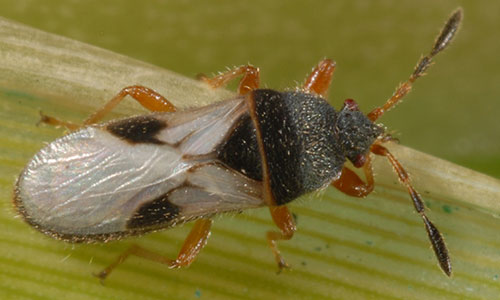
Chinch bugs are a complex of three different species within the Lygaeidae family. They have piercing-sucking mouthparts and they feed on the sap of grass plants.
They reside in the thatch area of the turfgrass stand and prefer to feed on the lower leaf sheath and crown area of the plant. The chinch bug can be a major insect pest on home lawns throughout the country. The hairy chinch bug (Blissus hirtus) is the most common species in the Northeast. The hairy chinch bug prefers bentgrasses, but will attack many other lawn grasses as well. The adult chinch bugs are about 3 to 5 mm (1/8 to 1/5 inch) in length and black with white markings on the wings. The wings rest flat over the back of the insect and there is a black spot between the wings. Adults may be long-winged or short-winged.
In many instances, chemical control of chinch bugs is not necessary. Many lawns have natural populations of predators, such as ground beetles or "big-eyed bugs," which can keep chinch bug populations from getting out of hand. Insecticide applications sometimes have very adverse effects on these predators, causing the chinch bug populations to develop more rapidly in subsequent years. Plant resistance has also been reported for a number of turfgrass species and cultivars. Research has demonstrated strong resistance of endophyte-enhanced turfgrasses to the hairy chinch bug.
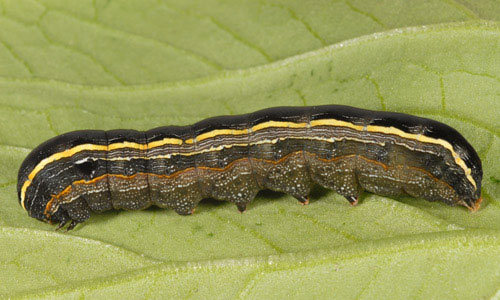
Armyworms are Florida pests that truly live up to their name. These little buggers are the larvae of moths and will chew the leaves of grasses and plants.
What’s more, they tend to move as a group with military-like precision from one area to another, feasting the entire way. Armyworms are active at night and they love to multiply. In fact, a single female can live as an adult for 17 days and in that time produce up to 2,000 eggs! Armyworms vary in color from dark greenish-brown to black, but they will always have long pale-white, orange and dark brown stripes running along their abdomens. Since moths prefer breeding in dense vegetation, Armyworm infestations usually occur in grassy or weedy fields. If you think you have an Armyworm problem, call in the pros.
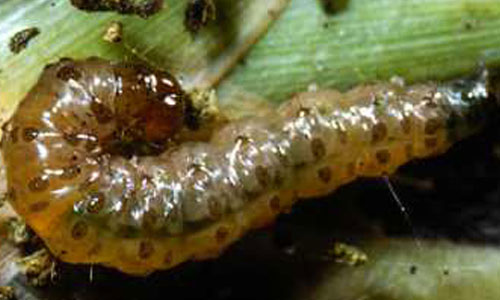
Tropical sod webworm larvae are destructive pests of warm season turfgrasses in the southeastern U.S., especially on newly established sod, lawns, athletic fields, and golf courses. Larval feeding damage reduces turfgrass aesthetics, vigor, photosynthesis and density. The first sign of damage is often caused by differences in grass height in areas where larvae are feeding. Tropical sod webworms are part of a pest complex of warm season turf caterpillars in Florida that include fall armyworm (Spodoptera frugiperda), striped grass loopers (Mocis spp.), and the fiery skipper (Hylephila phyleus).
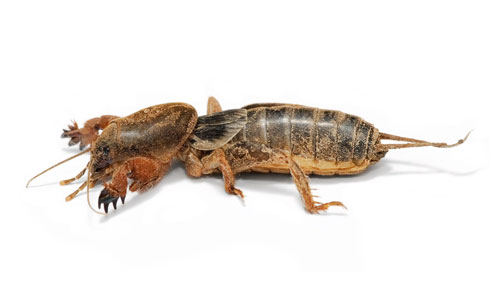
Mole crickets are common turfgrass pests. Three species of mole crickets are considered pests in the Southeast United States.: tawny, southern, and short-winged mole crickets. This insect’s "hands" are uniquely adapted for digging, allowing it to tunnel through the soil. Sod farms, home lawns, golf courses, and pastures can all play host to mole crickets. Any species of turfgrass can be damaged by mole crickets, but they particularly like bahiagrass and bermudagrass.
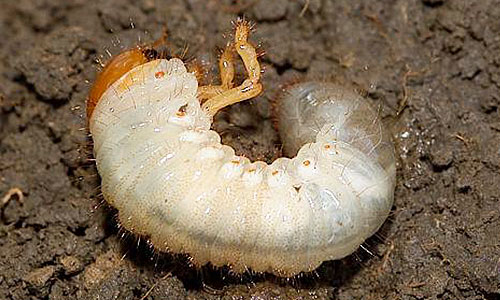
Grubs are 1/4” to 2″ depending on their age. They are creamy white, C-shaped, with tan heads and six legs. In Florida, grubs are a year-round problem. Their larvae hatch during the months of May and June. Grubs are the larval stage of beetles which have laid their eggs in the lawn. Grubs feed on the roots of turf grass, causing extensive damage. When grubs infest grass, it becomes thin, yellows, and eventually due to the damage to the root systems, the grass will die. The turf may feel soft and spongy in damaged areas. Scattered brown patches in the grass will appear, indicating dead areas with no root system. A grub infestation can quickly eradicate your lawn if left untreated.

New Customers Only
• Fertilization • Weed Control
• Lawn Pest Control
• Shrub Treatments & More

We proudly service all of the Central Florida area including: Lake Mary, Heathrow, Longwood, Deltona, DeLand, DeBary, Sanford, Orange City, and surrounding areas.